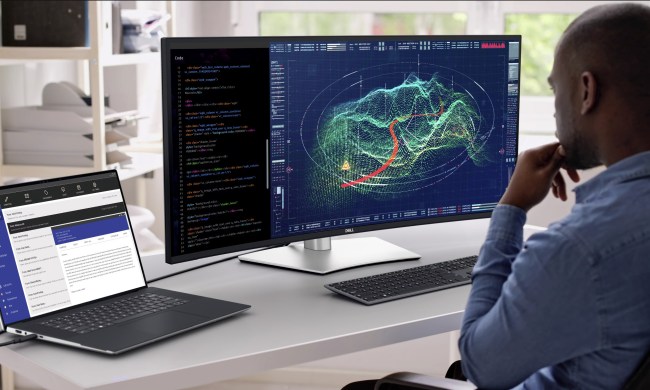Nvidia’s G-Sync technology gets rid of screen tearing while you’re playing games. For a long time, G-Sync displays were expensive because they required a proprietary module from Nvidia. Now, many of the best G-Sync monitors offer adaptive refresh rate without a module, making G-Sync monitors cheaper than ever.
- The best G-Sync monitors at a glance:
- The best 4K G-Sync monitor: Acer Predator XB273K
- The best 1440p G-Sync monitor: Asus ROG Swift PG279Q
- The best budget G-Sync monitor: Dell 24 Gaming Monitor
- The best high refresh rate G-Sync monitor: Alienware 25 Gaming Monitor
- The best ultrawide G-Sync monitor: LG 38GL950G-B
We’ve rounded up the top five G-Sync monitors, from budget displays like the Dell 24 Gaming Monitor to the insanely expensive LG 38GL950G-B. Out of all of them, though, the Acer Predator XB273K is our favorite. It’s a 4K display at a reasonable price, and it comes with top gaming features like a 144Hz refresh rate and, of course, G-Sync.
The best G-Sync monitors at a glance:
- The best 4K G-Sync monitor: Acer Predator XB273K
- The best 1440p G-Sync monitor: Asus ROG Swift PG279Q
- The best budget G-Sync monitor: Dell 24 Gaming Monitor
- The best high refresh rate G-Sync monitor: Alienware 25 Gaming Monitor
- The best ultrawide G-Sync monitor: LG 38GL950G-B
The best 4K G-Sync monitor: Acer Predator XB273K
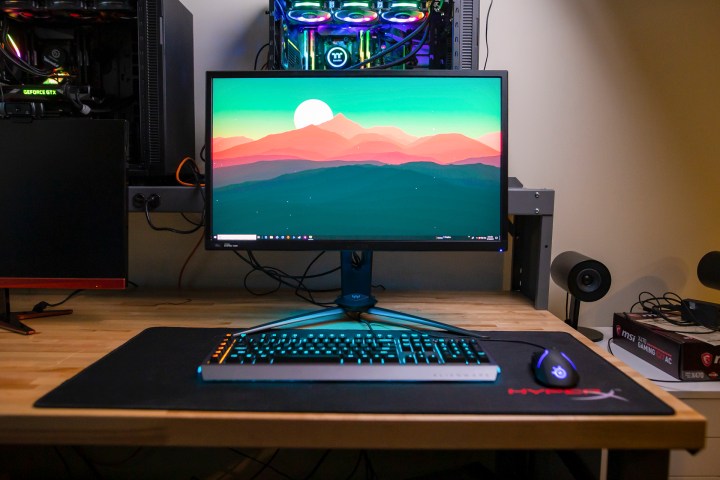
Acer’s Predator models are already great for gaming: Adding G-Sync and HDR support to this 4K model only makes it better. This 27-inch monitor has an excellent quantum dot screen with good color accuracy and amazing brightness levels thanks to the effective HDR.
The refresh rate starts at 120Hz and overclocks to 144Hz (DisplayPort only). The response time is a healthy 4 milliseconds — more than fast enough for most gamers. You also get the many Predator customization options for various gaming modes — action, sports, racing, etc. — and the ability to adjust color and other settings as you please.
We did have some issues with the design: The onboard controls for the Acer Predator XB3 are in the back and a little difficult to use, especially once you have the screen positioned the way you like. The ports — including HDMI, DisplayPort, USB-A, and USB-B — are well hidden but also difficult to access. As a result, setting this monitor up may take a little bit longer, but in the end, it’s all worthwhile.
The best 1440p G-Sync monitor: Asus ROG Swift PG279Q
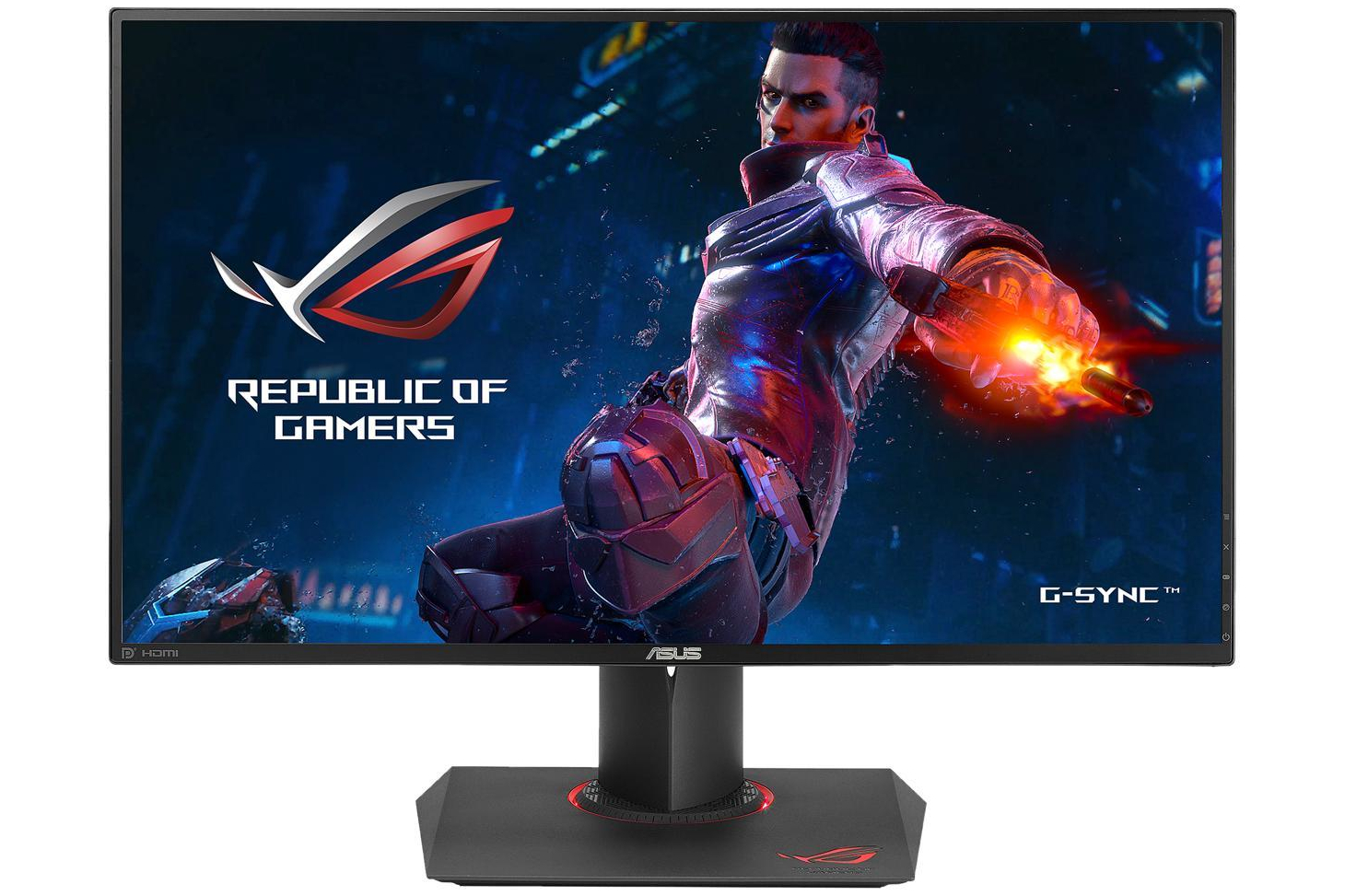
Our current favorite to earn the 1440p crown is the ROG Swift PG279Q from Asus. It packs a 2,560 x 1,440 resolution across a flat 27-inch IPS panel. It’s not quite as attractive as Razer’s unique Raptor 27 display that originally sat in this spot, but there’s plenty of eye candy to give your desktop a little visual flair.
This G-Sync display offers a maximum 165Hz refresh rate, a 350-nit maximum brightness, and a 1,000:1 contrast ratio. It doesn’t support HDR, but the IPS panel translates to rich, deep colors and wide viewing angles.
Other notable features packed into this Asus ROG Swift display include built-in two-watt speakers, a handful of ports, a built-in crosshair and FPS counter, and a 4-millisecond response time.
The best budget G-Sync monitor: Dell 24 Gaming Monitor

With G-Sync compatible certification, a 144Hz refresh rate, and full HD resolution on a TN panel, all for around $170, it’s hard beating the Dell 24 Gaming Monitor. We’re talking specifically about the S2421HGF, which is a high refresh rate G-Sync monitor with a 1-millisecond response time. It’s all you need for gaming, and it’s as cheap as monitors come.
The monitor is G-Sync compatible, meaning it doesn’t have a dedicated G-Sync module inside. However, it will still solve screen tearing without adding input lag. If you decide to switch to an AMD graphics card down the line — maybe one of the new RX 6000 cards — you’re covered, too. The monitor supports FreeSync Premium through the DisplayPort connection.
The specs are right, especially for the price, but the Dell 24 Gaming Monitor makes cuts in a few areas. The included stand doesn’t have a lot of adjustment options, and the panel isn’t very color accurate. Still, those issues are easy to overlook considering how inexpensive the monitor is. We’re recommending the 24-inch model here, but you can pick up the 27-inch version for $50 more.
The best high refresh rate G-Sync monitor: Alienware 25 Gaming Monitor
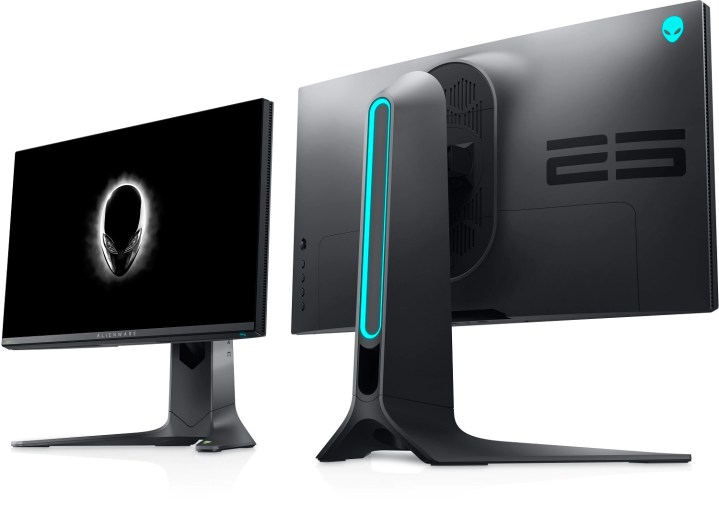
The Alienware 25 Gaming Monitor offers a blistering 360HZ refresh rate on a 24.5-inch IPS panel. Like the previous monitor, there are several variations of this one. We’re talking specifically about the AW2521H. It’s a 25-inch full HD monitor that comes with a 1-millisecond response time and a 360Hz refresh rate through DisplayPort or a 240HZ refresh rate through HDMI.
It has a dedicated G-Sync module inside, meaning it’s been validated by Nvidia to offer a variable refresh rate without any visual artifacts or input lag. Additionally, the monitor comes with a Nvidia Reflex latency analyzer, and the panel covers 99% of the sRGB color spectrum. You can output the Nvidia Reflex data through one of the five USB 3.2 ports that are situated around the monitor.
Although the Alienware 25 Gaming Monitor doesn’t support HDR, it still comes with a peak brightness of 400 nits. If you mostly play competitive games like Overwatch, Valorant, and Counter-Strike: Global Offensive, it’s hard beating Alienware’s 360Hz behemoth.
The best ultrawide G-Sync monitor: LG 38GL950G-B
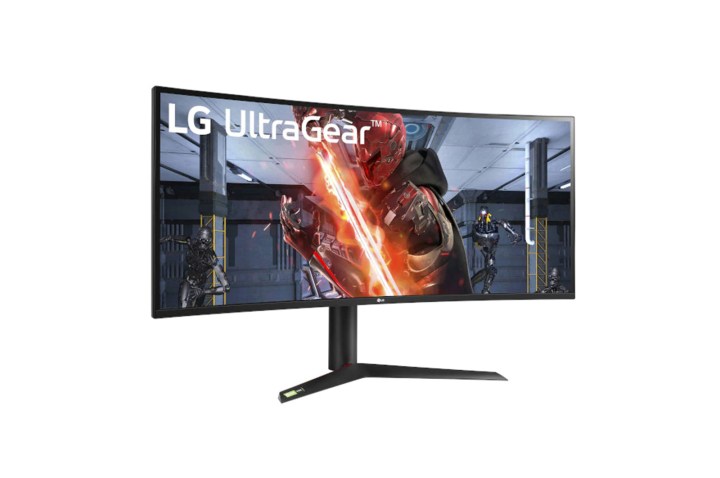
The LG 38GL950G-B is an absurd display. It’s a 38-inch curved ultrawide monitor with a resolution of 3840 x 1600. The panel uses nano IPS technology, offering 98% coverage of the wide-gamut PCI-P3 color space, and it’s certified for VESA DisplayHDR 400. There’s also a G-Sync module inside for tear-free gaming, and the panel supports a 144Hz refresh rate (175Hz if you overclock it).
It’s an absurd monitor, but it comes with an equally absurd price tag. At around $1,800, the LG 38GL950G-B is one of the most expensive monitors on the market. However, it’s rare to find a large ultrawide with a high refresh rate, HDR, and G-Sync support, and the few that do exist are even more expensive than LG’s offering.
LG makes the price worth it, too. In addition to top-of-the-line specs, the LG 38GL950G-B comes with Sphere Lighting 2.0, which offers subtle accent lighting that you can sync with music, movies, or games, and it also comes with a highly adjustable stand.


